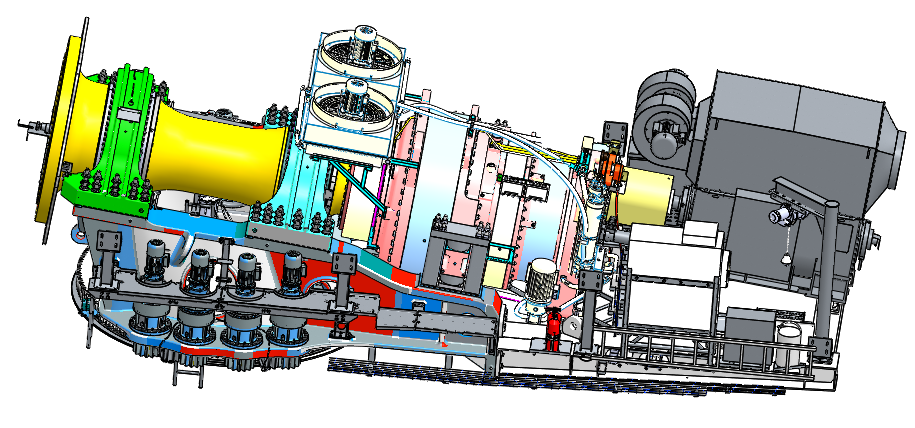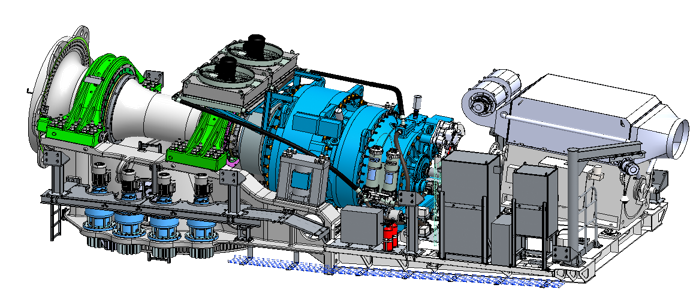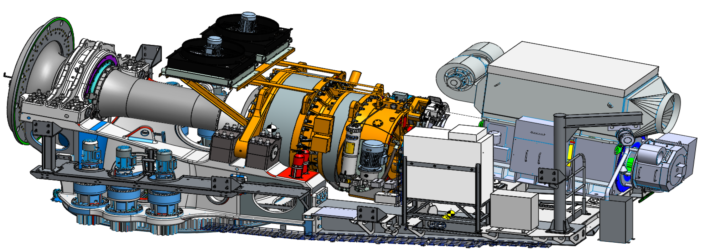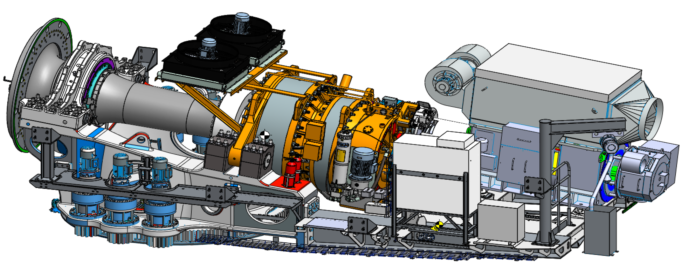Wedoany.com Report-Nov 11, Jenny Chryss, campaign lead for the group RE-think, which opposes the building of a network of wind farms across mid Wales, responds to the news that Bute Energy has been granted permission to build the Twyn Hywel Energy Park at Senghenydd, near Caerphilly.
I think a lot of people will have been extremely surprised at the Inspector’s decision to approve Twyn Hywel.
As Nation.Cymru’s article stated, this is a controversial proposal which was even opposed by some of the Welsh Government’s own civil servants. Nonetheless, significant concerns expressed by both experts in the field and local people have been brushed aside.
On reflection though perhaps we should not be so surprised. This was a major test of Policy 17 of the Welsh Government’s “Future Wales, The National Plan 2040” which in 2021 created 10 so-called Pre-assessed Areas for Wind.
In these areas there would be a “presumption in favour” of large-scale wind development, with Policy 18 acting as a checks and balance mechanism.
All but three of Twyn Hywel’s 14 turbines are sited within one of these “pre-assessed areas” and in his determination the Inspector makes much of Policy 17. He makes no bones about the effect on nearby communities, pointing out that: “In such areas it is to be expected that there would be a considerable degree of visual impact given the proximity of the pre-assessed area to settlements.”
He concludes that there would be significant adverse impacts which must be weighed against the proposal, plus an adverse and significant effect on landscape character around the site. But he goes on to say that such impacts would not be unexpected for a development of this scale in this type of landscape.
It was “unavoidable” he said, that “visual receptors” (ie people) would see wind energy development in this pre-assessed area. Whether or not it was acceptable was a matter of planning.
Lavender
Deciding whether or not the impact of a development on local residents would be significant, or worse unacceptable, hinges on the ruling of a planning Inspector called Lavender back in 2009.
If it is deemed “unacceptable” under the terms of Lavender it should not go ahead. But there is a catch! Crucially, Inspector Lavender was ruling on turbines 100 metres tall to blade tip, half the height of those intended at Twyn Hywel. Others in the pipeline are even bigger, at 220 metres and more.
The method of assessing noise from wind farms ETSU-R-97 is, as its name suggests, even more out of date. In short, shouldn’t we be urgently asking whether these old assessment tools are appropriate when vital decisions are being taken on where to place today’s modern, and larger, generation of turbines?
Meanwhile, if you live in Wales within or close to a “pre-assessed area” you had better get used to the idea that a “large-scale” onshore wind farm is probably coming your way.
No longer is this a few shaded areas on a map, but a real-world illustration of the Welsh Government’s climate change policy in action. One could ask why, if it was so obvious that there will be an “adverse and significant effect” the area was deemed suitable for pre-assessment in the first place. But perhaps that’s a question for another day.
Peat
The Inspector addressed concerns about conserving peat on the site by stating the proposal would largely avoid areas of peat and impacts on soils, subject to securing a Peat Management Plan (PMP), and that there would be a “very minor localised impact” on peat. He was satisfied that the applicants had taken steps to protect peat and that mitigation measures would be put in place during construction via the Peat Management Plan.
This statement is in direct contrast to a formal letter of objection from the Head of the Welsh Government’s Peatland, Soil, and Agricultural Land Use planning team. In it he stated that it would contravene policies 17 and 18 of “Future Wales, The National Plan 2040” as it would have an unacceptable adverse impact on the environment and represents a net loss of the peat resource.”
He also questioned whether satisfactory reclamation could be achieved, as required under Policy 18 and said planning permission should be refused.
The irony can’t be missed that these are the very policies on which the Cabinet Secretary for Economy, Energy and Planning has relied in granting permission for the scheme, and to which the Inspector gave considerable weight.
It is also an early test of the recently updated Chapter 6 of Planning Policy Wales, which is aimed at increasing biodiversity through “green infrastructure” provisions.
The Inspector’s reliance on a “Peat Management Plan” opens up another can of worms. A lot of this application is subject to “conditions” and other tools such as “management plans” that the applicant has to fulfil post permission. Bats, birds, peat, drainage, habitats all fall into this category.
However, once permission is granted, for the Welsh Government it’s job done. The rest is down to Natural Resources Wales and local planning authorities, ie local councils.
Cash-strapped as they are, it is for them to ensure that everything promised before consent is fulfilled afterwards, with breaches rigorously enforced. They are expected to meet the costs themselves, and, unsurprisingly, they are struggling. There is already one infamous wind farm in mid Wales which was built against many of the conditions imposed on and then ignored by the developers.
It’s still not working several years on. How many more of these do we want? And if enforcement is not robust, what then for the nature emergency we are facing?
Funds
Extraordinarily in the case of Twyn Hywel the developer itself is offering to come to the rescue.
Bute Energy has apparently “indicated a willingness to provide funds to pay for enforcement for this project to be managed through planning performance agreements”. They want to pay the enforcers for enforcing their own conditions. Conflict of interest, perhaps?
Bute Energy states that this development will generate 92.4MW of energy each year, enough to power the equivalent of 81,000 homes. But onshore wind is so erratic as a source of energy that it only actually produces about 25% of its capacity – for example 24.6% in 2023 (DUKES).
One could ask to what extent they have taken this into account when making their calculations.
It wouldn’t have generated much in the past few days when we have been in a so-called Dunkelflaute period with little wind blowing at all.
In the past week wind has contributed only 12.8% of our energy, compared with gas at 50.4%. Building more turbines wouldn’t help much, if at all, because the wind has simply not been blowing.
The approval of Twyn Hywel is more than just a planning decision. It demonstrates that the Welsh Government’s rush for “net zero” is now well and truly on, with no means of appeal except through the courts, which of course most people could never afford. It appears that it is the “skint little people” (Alan Bates, Post Office Scandal) who will end up as the collateral damage.
The jury is out on whether intermittent large-scale onshore wind development can ever play a major part in a secure and stable UK energy system.
By the time we really know, for those parts of Wales bearing the brunt, it seems the damage may already have been done.

















